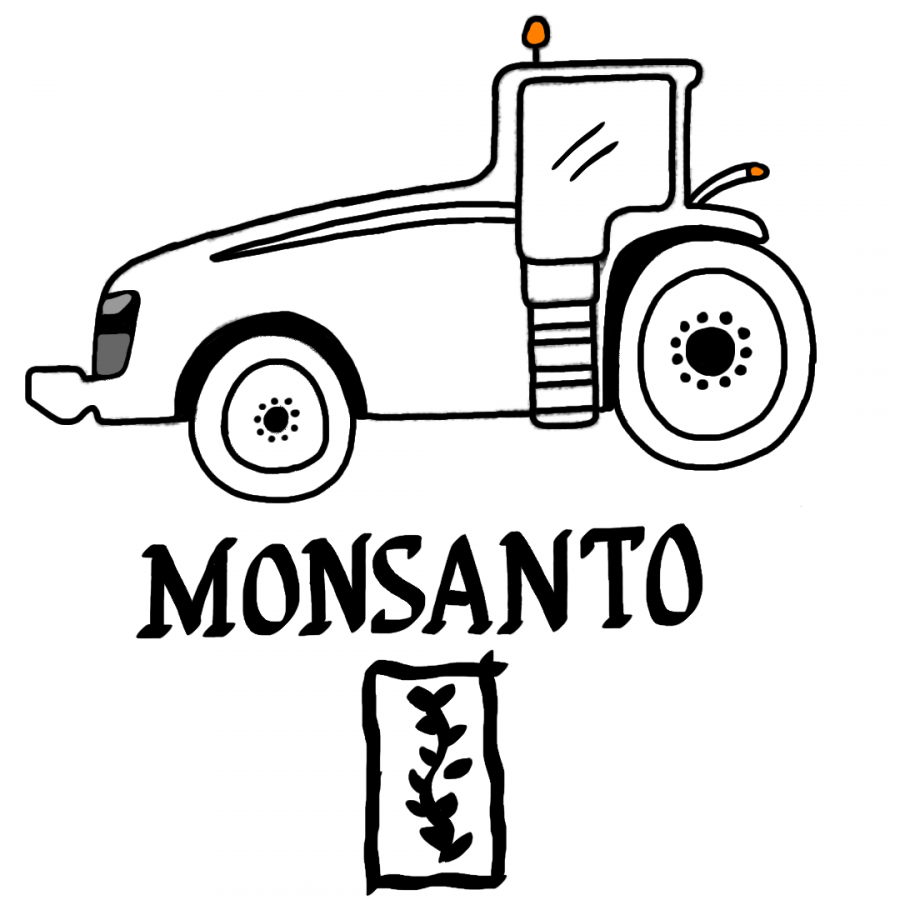GMOs offer cure for poverty
The use of GMOs (Genetically modified organisms) have been an issue of worldwide debate for as long as they have existed. Many people believe that GMOs are dangerous to humans. However, in reality, they are not only helping humanity but helping to protect the environment as well.
Genetically modified crops are arguably the most common form of modified organism in our modern world. Some of the most common GM crops used in the United States are corn, soybeans, cotton, and potatoes. Through genetic modification, scientists can specialize these crops to increase yield, and have a resistance to pests. These GM crops allow farmers to produce more crops without using more land. Additionally, farmers don’t need to purchase and use pesticide, which decreases the cost of crop production. In turn, this assists those in poverty by creating low-cost food.
The resistance to pests that has been engineered into these crops does more than just save money. It takes away the dangers of using man-made pesticides, known to cause illnesses in farmers and cause harm to the environment. GM plants prevent the use of these harmful pesticides by modifying the crops to express a protein from “Bacillus Thuringiensis.” This protein, according to the Entomological Society of America and the EPA, is deadly to certain insects, but not harmful to humans and other mammals.
GMOs have had a great effect on humanity’s agricultural endeavor. A German meta-study published in PLoS One found that, on average, since GMOs have been adopted, chemical pesticide use reduced by 37%, farmer profits increased by 68%, and crop yields increased by 22%. The same study had also found that in underdeveloped countries the yields increased with an average of 36%. They attributed this to the higher rate of pest related crop damage in these countries, which the use of Bt in GM crops mitigated.
However, there are several more uses of GMOs that are currently in development and testing. One such GM is a variation of rice that has a higher concentration of vitamin A, this GMO is known as golden rice. According the the Golden Rice Humanitarian Board, vitamin A deficiency compromises the immune systems of 40% of children under the age of five in developing countries. The use of this genetically modified rice can solve this problem, and create higher life expectancy in these countries. We can also help the economy of these countries with the use of other GM crops that increase profitability, along with yield, which would further help to fight malnutrition and boost the economy of these countries.
GMOs can be used to help the environment as well. The most obvious way we can use GMOs to help the environment is by reducing the amount of land we use for farming. USDA-NASS statistics have shown that ever since the use of GMO crops, the average yield per acre has increased drastically. In Georgia, during 1914, it took one acre to produce half a bale of cotton. In 2012, it took one acre to produce two bales of cotton, four times as much as before GMOs. This was attributed to the adoption of the use of GMOs for cotton. This means we can create more crops without using more land, which means we don’t have to cut down the forests around us for farmland. Additionally, scientists are currently developing powerful ways to stop, and possibly reverse climate change. A team in Germany has developed a chain to replace the enzyme chain used in photosynthesis. If a living plant is given this modification, it could metabolize carbon dioxide two or three times as fast as it does now. We could use this technology to reverse our effects on the planet or to, at the very least, buy us time to figure out a better solution for global warming.
The fear of current GMOs being dangerous, while not founded on facts, does raise a fair point. Without heavy regulation and testing it is theoretically possible to create a GMO that could have negative effects. However this is why lengthy and extensive testing is performed by the FDA, EPA, and USDA APHIS. This testing of GMOs for potential human risk, environmental risk, and livestock risk takes up to 5-7 years. We must ensure that all GMOs continue to be analyzed and tested intensely before use in order to insure that they can’t do harm.
GMOs are our best chance for change in the world. The time has come to not only save humanity but save the environment from humanity.
Your donation will support the student journalists of Saint Viator High School. Your contribution will allow us to purchase equipment and cover our annual website hosting costs.








